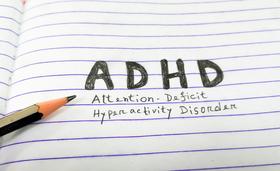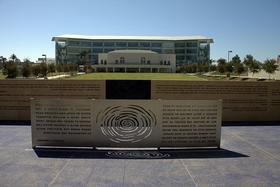Year-Round Or Traditional Schedule?
For a variety of reasons, schools across the country are switching their schedules to a year-round curriculum.
- This means that both students and teachers no longer have the traditional two months of summer vacation.
- While some parents enjoy the year-round schedule, others engage in a heated debate about the new trend.
- Some schools are implementing the year-round program to maintain more consistent instruction.
- Other schools are switching in order to save money.
While many parents are concerned about the potential change for their children and family, each schedule offers its own pros and cons.
This video from PBS examines the pros and cons of year-round schools.
The Year-Round Calendar
When using the term “traditional calendar,” most schools are referring to the most popular schedule, where students and teachers are able to have an extended summer vacation, in addition to the standard holiday breaks throughout the school year.
- According to data from the National Center for Education Statistics, 86 percent of public schools in the United States operate on a traditional calendar, even though it’s the original purpose – so that children could help parents harvest crops – is no longer an important consideration.
- Since the traditional summer vacation is no longer “essential,” some experts maintain that continuing to use the traditional calendar is not what’s best for today’s children.
- As schools are now experimenting with the year-round schedules, many schools are getting rid of the traditional summer vacation, yet are simultaneously providing students with more frequent and consistent breaks from school.
While each school’s schedule may vary slightly, the most popular year-round schedule is what’s called a 45-15 plan, in which children attend school for 45 days then have three weeks off.
This schedule cycles consistently throughout the year while making minor adjustments for major holidays and teacher workdays.
- Other popular year-round schedules are the 60-20 and 90-30 calendars, where students are in class for 60 or 90 days with vacations of 20 or 30 days respectively.
- Data from the National Association of Year-Round Education shows that schools in 46 states and the District of Columbia have adopted a year-round format and that nearly 3 million K-12 students in the U.S. attend a year-round school.
- While this figure represents only about 4 percent of all K-12 students in the U.S., it is significantly higher than it was 30 years ago, when less than 400,000 U.S. students attended school year-round.
The Year-Round Benefits
Likely the most popular argument for year-round schooling is to avoid the dreaded “brain drain” that students experience during summer vacation.
- Proponents of year-round school maintain that students forget knowledge and skills they acquired during the previous academic year.
- Several studies support this notion, as children show losses in math and language arts knowledge over the long summer break.
- Additionally, after a long summer break, students must re-acclimate themselves to the school schedule, their teachers and their peers, as well as to school rules and expectations, homework, and non-academic demands such as participation in sports.
- Teachers report that the first month of each new school year is spent figuring out what children have retained and reviewing what they have forgotten over the summer break.
- Some data suggests that year-round school increases retention rates, as students in year-round schools have demonstrated higher scores on some standardized tests.
This video from Wake County in North Carolina looks at the benefits of year-round schools.
According to Associated Content, shorter breaks (such as those found in the 45-15 calendar), as opposed to one long summer break, also provide both students and teachers with time to relax and regroup.
- Teachers who work for year-round schools report that it gives them a break when they most need it.
- Studies support this notion, as year-round schools have a lower staff turnover rate.
- The year-round calendar also gives teachers the workdays they need at the times they most need them, such as at the end of a grading period when demands for their time are especially high.
- As such, teachers on a year-round schedule tend to view it as a positive experience.
- Students and parents in year-round schools also have generally positive feelings toward year-round schooling because the frequent breaks allow them to recharge and reenergize as well.
Year-round schooling also allows for remediation to occur over the course of the year, rather than just during the summer months.
- For example, on a 45-15 schedule, teachers can offer “mini-summer school” lessons, where struggling students can come to school to get help during their time off.
- For students with special needs, or for students struggling in a particular area, quick interventions such as these can help keep all students on pace.
Ultimately, research indicates that most students who attend a year-round school perform better academically, especially those who come from socioeconomically disadvantaged families.
- However, it is important to note that these gains are not solely because of attending school year-round.
- Certainly, a large part of students’ academic improvement is the implementation of specialized programs during on and off times throughout the year that allow students to undertake remediation in areas of academic weakness.
- Many schools also offer enrichment programs during on and off times for children who are at or above grade level.
These experiences also factor into improved student performance on academic measures.
The Year-Round Conflict
While many school leaders assert that the year-round calendar is designed to help students, some parents are not accepting the adjustments.
- Parents are concerned that their families would not have enough time to take vacations without a long summer break.
- In fact, some parents go so far as to keep their kids home until after Labor Day in order to protest and force the school to maintain its traditional calendar.
This brief video discusses the pros and cons of year-round schooling.
The year-round calendar can potentially be a scheduling nightmare for some parents.
- For example, parents who have multiple children in school might have one child in a year-round school and others in schools that operate on a traditional calendar.
- In such cases, parents can struggle to find times during the year when the whole family has time to relax, travel, or spend time together.
Opponents of year-round education also point to the difficulties created for students who want or need to work in the summer.
- Year-round schooling, with its shorter and more frequent breaks, can interfere with job opportunities, as well as non-school related sports and activities such as summer camps and parks and recreation activities.
- Students who want to attend college classes in the summer are also prevented from doing so if a year-round schedule is in place.
- These opportunities are diminished for teachers as well, who might otherwise use the summer break to work towards a higher degree, participate in professional development courses, or have summer jobs of their own.
The Year-Round Opportunities
While the debate rages on, the test results demonstrate that year-round schools do present some academic benefits.
In addition to helping students stay motivated, the year-round schedules also present opportunities for students to attend academic camps and club programs that might otherwise not be available in the summer.
Many educators and parents do not feel that kids need a full two months away from school.
While the year-round schedule certainly requires an adjustment, the changes can bring in more consistent rest periods, expanded learning opportunities, and a more refreshing approach to education and learning for students, parents, and teachers alike.
Questions? Contact us on Facebook, Instagram, and YouTube. @publicschoolreview
#publicschools #yearroundschools











